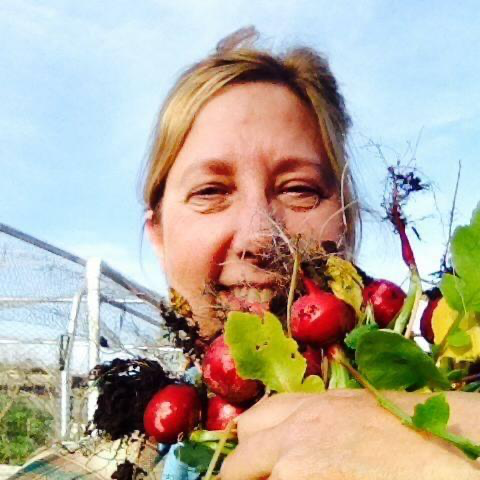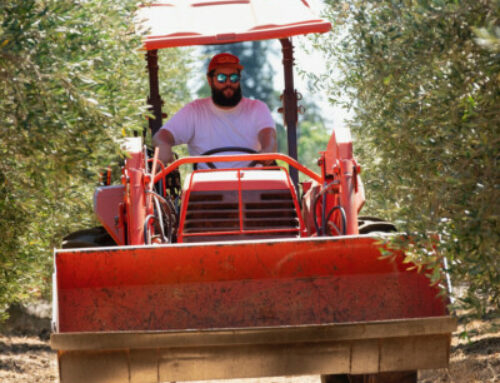Geraniums are sometimes referred to as “cranesbills”
![]()

Photo courtesy Mitchells Nursery
Geraniums come in reds, oranges, purples and whites and can outlast just about every other flowering plant in your garden.
By Sharon McCray

Sharon McCray
There comes a time in every gardener’s life when easy and simple is best. I recently discovered an old garden favorite, geraniums (also called pelargonium). I know, I know, but actually, our grandmothers were definitely on to something.
These brightly colored flowers are sturdy, somewhat drought tolerant and medicinal. Who knew? Apparently, grandma did.
In my retirement, I find myself spending more time “out and about” than actually working in my garden. We depend on the vegetables and our fruit trees can be counted on for sure, but the ornamentals seem fleeting and undependable. Then I planted a few Geranium stem cuttings from friends and voilà — reds, oranges, purples, and whites outshined and outlasted just about every other flowering plant in my garden. The variety of colors and leaf patterns is unlimited, or so it seems. The more I looked into these mystery plants, the more intrigued I became.
I first took notice of the bright, drought-tolerant plants growing along the roadways in Campbell and Santa Clara. Geraniums are definitely the plants you want to purchase when they are in flower as the flowers and leaf patterns can be so impressive. In our area, we consider most geraniums perennials, bursting with color and fragrance in early spring and into late fall. They will bloom all summer until frost finally lets them rest. They use less water during dormant stages in late fall and winter.
 Geraniums are sometimes referred to as “cranesbills” because spent flowers resemble a storks bill. These unique and dependable plants should have a place in everyone’s garden. There are annuals, biennials and perennial plants to choose from, but in most of Santa Clara County, we consider them perennials. Geraniums seem to appreciate our alkaline soils and dry summers better than most other ornamental plants. It is interesting to note, geraniums are found all across the world including European and South African varieties along with Geranium californium, a perennial herb endemic to the Sierra Nevada Mountains.
Geraniums are sometimes referred to as “cranesbills” because spent flowers resemble a storks bill. These unique and dependable plants should have a place in everyone’s garden. There are annuals, biennials and perennial plants to choose from, but in most of Santa Clara County, we consider them perennials. Geraniums seem to appreciate our alkaline soils and dry summers better than most other ornamental plants. It is interesting to note, geraniums are found all across the world including European and South African varieties along with Geranium californium, a perennial herb endemic to the Sierra Nevada Mountains.
They thrive in both sunny and partial shade and require minimal feeding with an all-purpose fertilizer. The amount of sun each plant receives will determine the amount of flowers and their longevity. Some newer varieties do not need to be deadheaded and seem to produce more flowers.
The foliage on many varieties is stunning and can sometimes outshine the flowers. Most geraniums are deer and rabbit resistant. Some provide enchanting fragrance when touched or brushed against. Pinching back stems will help keep the plant size manageable and flowers producing. It is important that plants have room to spread and maintain good air flow.
 The Citronella Scented Geranium, sometimes called that “mosquito plant,” will deter furry pests and mosquitoes. I have found it to be one of the most dependable plants for difficult, dry areas. The small purple flowers of this variety are not showy, but the shaggy leaves are interesting and fast growing.
The Citronella Scented Geranium, sometimes called that “mosquito plant,” will deter furry pests and mosquitoes. I have found it to be one of the most dependable plants for difficult, dry areas. The small purple flowers of this variety are not showy, but the shaggy leaves are interesting and fast growing.
Propagating from cuttings is almost a guaranteed success. They seem to root from stem cuttings almost instantly with a little rooting hormone and a moist environment until established. I have no experience growing them from seed as plants are typically reasonably priced and my greenhouse is normally full of vegetable seedlings. Friends and neighbors are always generous with cuttings.
Because of their minimal water needs, container plantings are a good option in areas where soil is difficult or non-existent. Trailing geraniums types do fantastic in containers and can be more easily kept out of reach of pets. As a note of caution, the ASPCA reports that geraniums are toxic to dogs and cats, so if your pets have a tendency to feast on your garden, you might want to re-consider geraniums.
Sharon McCray is a California native living in Santa Clara County since 1959. She became certified as a University of California cooperative extension master gardener in 1992 and a UCCE master naturalist in 2015. She hosts a radio show on KKUP public radio and is now retired.






